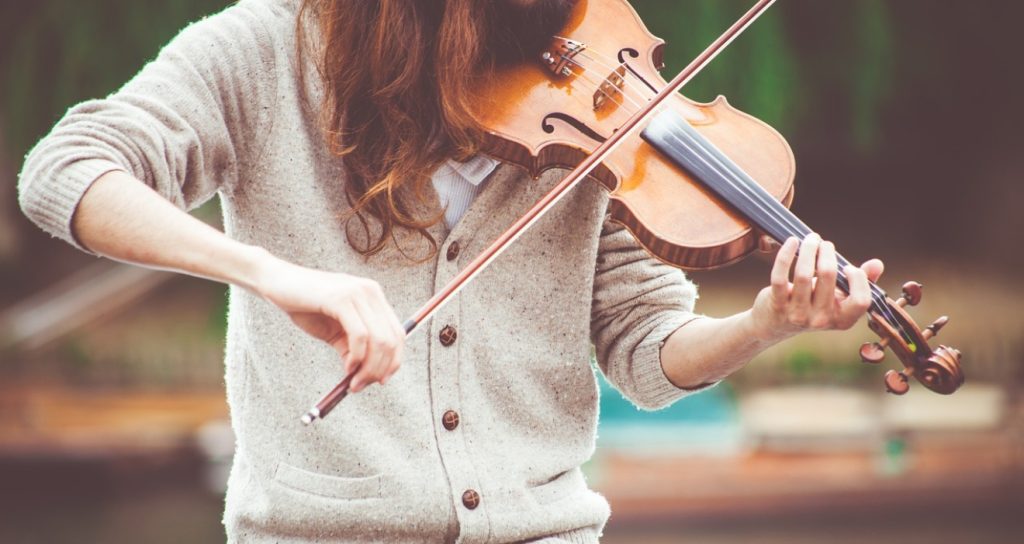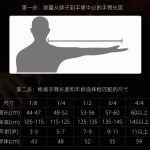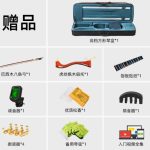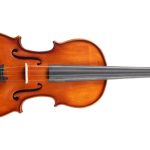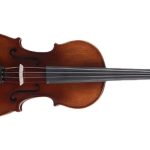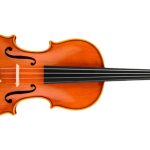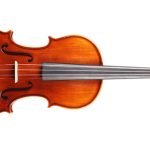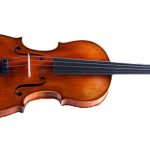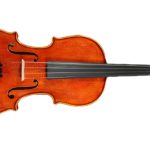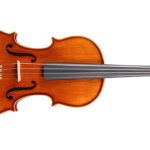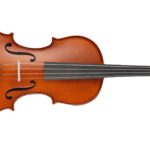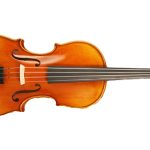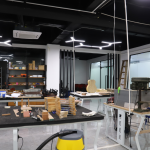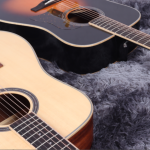Violin is an elegant yet challenging instrument. For beginners, choosing the right first violin is crucial. However, the market is flooded with misleading information and low-quality products, making it easy to fall into purchasing traps. This article will reveal the three most common pitfalls for beginners and provide detailed analysis of 9 cost-effective violins, helping you make an informed choice and start your enjoyable violin learning journey.
I. Three Major Pitfalls: Beginners Must Be Alert!
Pitfall 1: Scams of Fake Imported Brands
Marketing slogans like “German craftsmanship” or “Supervised by Italian masters” have become tools for some merchants to inflate prices. In fact, many so-called “imported brand” violins on the market are produced by small domestic workshops, and their prices double or triple after being labeled with foreign brands.
These fake imported violins are poorly crafted with shoddy details. For example, the gap between the pegs and the scroll is too large, causing the strings to slip easily during tuning; the edges of the fingerboard are not finely polished, which may scratch fingers when pressing strings. Worse, these violins lack a sound after-sales service system, making it difficult for consumers to get effective repairs and guarantees if problems arise.
Identification Methods: When purchasing imported brand violins, always check relevant import certificates such as customs declarations. Meanwhile, query information about authorized domestic dealers through the brand’s official website to avoid buying from informal channels. Brands with sound domestic sales and after-sales networks ensure product quality and service.
Pitfall 2: Improper Size Selection Affects Learning
Many beginners, especially parents of child learners, have misunderstandings when choosing violin sizes, thinking that “a larger violin can be used for a longer time.” This idea is wrong. An ill-fitting size will affect the correctness of playing posture and even cause adverse effects on physical development.
Violin sizes are determined by the player’s height and arm length. If the violin is too large, the player will have to bend over or shrug to reach the notes on the fingerboard, leading to cervical and shoulder injuries over time. Moreover, an inappropriate size makes it difficult to press strings and move the bow, hindering learning progress.
Scientific Selection: Refer to the following standards when choosing a violin size:
- 1/4 size: Suitable for children under 110cm in height
- 1/2 size: Suitable for children 110-130cm in height
- 3/4 size: Suitable for teenagers 130-150cm in height
- 4/4 size: Suitable for adults over 150cm in height
If possible, let the child try playing in person to check if they can easily reach all notes on the fingerboard and if the holding posture is natural and comfortable.
Pitfall 3: Ignoring the Importance of Accessory Quality
Many beginners focus only on the violin’s quality and price while neglecting the importance of accessories. In fact, low-quality accessories not only affect playing performance but may also damage the violin body.
Common Issues with Poor-Quality Accessories:
- Case: Thin materials with poor shockproof and moisture-proof performance fail to protect the violin effectively. Some low-priced cases even lack stable support structures, causing the violin to shake inside and get worn.
- Rosin: Poor-quality rosin easily accumulates on strings, affecting tone, and its unstable friction leads to unsmooth bowing.
- Bow: Inferior bows have crooked wood grain, poor elasticity, or uneven weight distribution, affecting bowing stability and control. Long-term use may cause wrist fatigue and incorrect bowing habits.
Correct Approach: Choose sets with complete and high-quality accessories, prioritizing packages that include branded cases, high-quality rosin, and regular bows. Although such sets may be slightly more expensive, they avoid the hassle and extra costs of replacing accessories later.
II. 9 Recommended Cost-Effective Beginner Violins
▶ 500-1500 RMB: Ideal for Newbies
1. VEAZEN SV338 Series, Price: 999 RMB
- Configuration: Spruce top, maple back and sides, ebony fingerboard and tailpiece
- Features: Perfect for beginners with smaller hand sizes, making string pressing easier. The violin has a moderate weight for comfortable holding. Accessories are complete, including a sturdy shockproof case, accurate electronic tuner, natural rosin, and spare strings—ready to use right out of the box. The edges are rounded to avoid scratches.
- Tone: Clear and bright, carefully adjusted by professional technicians to meet beginners’ basic tone needs, performing well in simple etudes and children’s songs.
2. SEENWINS SW003 Series, Price: 1558 RMB
- Configuration: Spruce top, mahogany back and sides, ebony fingerboard and tailpiece
- Features: Lightweight structure with a compact, portable case, ideal for long holding without fatigue. Equipped with an efficient mute, it effectively reduces volume—suitable for practice in quiet environments like dorms or homes to avoid disturbing others. The fingerboard is finely polished for smooth string pressing.
- Tone: Warm and soft, suitable for classical music and folk songs, perfectly showcasing the warm atmosphere of soothing pieces.
3. Christina V06 Series, Price: 1377 RMB
- Configuration: Spruce top, maple back and and sides, ebony fingerboard and tailpiece
- Features: The fingerboard edges are specially rounded for enhanced fingertip comfort, reducing common fingertip pain in beginners. The pegs have anti-slip 纹路 for easy tuning even with sweaty hands, ensuring stability and minimal string slipping. The painting technique is not only aesthetically pleasing but also enhances the natural tone.
- Tone: Balanced with excellent mid-high frequencies, clearly highlighting melodic lines in melodic pieces, suitable for various musical styles.
▶ 1500-3000 RMB: For Intermediate Learners
4. VEAZEN SV438 Series, Price: 1999 RMB
- Configuration: Grade A spruce top, flamed maple back and sides, ebony fingerboard and tailpiece
- Features: The top is made of high-quality solid spruce, naturally air-dried for over 5 years, with superior resonance—significantly better than plywood violins. The string spacing is precisely adjusted for easy pressing, even during long practice sessions. The bridge is handcrafted from high-quality maple to ensure good sound transmission.
- Tone: Full and rounded with a strong sense of layering, rich bass, and clear treble—meeting intermediate learners’ needs and showcasing musical expressiveness in slightly complex pieces.
5. Kapok NV-200 Series, Price: 1945 RMB
- Configuration: Spruce top, maple back and sides, ebony fingerboard and tailpiece
- Features: As a well-known domestic brand with rich craftsmanship experience, it adopts a five-piece neck design—spliced from various high-quality woods for superior stability and anti-twisting ability, withstanding long-term use pressure. The fingerboard is smooth for comfortable pressing, ensuring stable intonation. The eco-friendly paint is both beautiful and harmless.
- Tone: Rich and powerful with excellent bass performance, suitable for classical music and etudes, allowing clear hearing of each note’s texture.
6. FineLegend L8 Series, Price: 2333 RMB
- Configuration: Grade A spruce top, maple back and sides, ebony fingerboard and tailpiece
- Features: The back and sides use flamed maple with beautiful grain, which helps transmit sound and enhance tone brightness. The high-density ebony fingerboard is wear-resistant, remaining in good condition even after long-term use without marks from string pressing. The tail cord is made of high-strength material for durability, withstanding the bow’s pull. The included case is beautifully designed with excellent shockproof and moisture-proof performance to protect the violin.
- Tone: Bright and transparent with strong penetration, suitable for small performances and group classes—ensuring your sound is clearly heard even in ensemble playing.
▶ 3000-5000 RMB: For Professional Beginners
7. VEAZEN SV518 Series, Price: 2999 RMB
- Configuration: Grade A+ spruce top, flamed maple back and sides, ebony fingerboard and tailpiece
- Features: Both the top and back/sides are made of solid wood, naturally air-dried for over 5 years, with excellent stability to adapt to different climates. The hand-polished bridge has a precise shape, ensuring good sound transmission and outstanding tone—no need for extra string replacement. The neck feels comfortable for long playing sessions.
- Tone: Rich and delicate with balanced high and low frequencies, good resonance, and strong expressiveness—meeting higher-level performance needs and perfectly conveying musical connotations in emotional pieces.
8. YAMAHA V3SKA Series, Price: 3999 RMB
- Configuration: Spruce top, maple back and sides, ebony fingerboard and tailpiece
- Features: Adopts advanced Japanese craftsmanship with strict quality control; each violin is precisely adjusted for minimal intonation error. The sound holes are reasonably designed for smooth air circulation, ensuring excellent volume and penetration. Global warranty service is available, providing quality after-sales support both domestically and abroad—ideal for students planning to study abroad. The violin has a moderate weight with good balance when held.
- Tone: Clear and bright with stable intonation, suitable for various styles, especially outstanding in ensembles, blending well with other instruments.
9. SUZUKI SV-18AL Series, Price: 4380 RMB
- Configuration: Spruce top, maple back and sides, ebony fingerboard, carbon fiber tailpiece
- Features: Suitable for long practice sessions and performances. The pegs adopt a micro-damping system for high tuning precision and stable intonation, with minimal pitch deviation even after multiple performances.
- Tone: Round and full with rich expressiveness, perfectly conveying musical emotions and performing well in technically demanding pieces.
II. Buying Tips & Considerations
-
Assess Personal Needs: Consider height, hand size, learning goals, and budget. For children, opt for adjustable shoulder rests to accommodate growth.
-
Test Before Buying: Whenever possible, test the violin to evaluate feel, tone, and comfort. Play simple scales to check intonation, string spacing, and bow responsiveness. Seek advice from teachers or experienced players if unsure.
-
Prioritize After-Sales Service: Choose brands with reliable support, including warranties for neck adjustments or peg replacements. Verify service coverage, duration, and repair network locations to avoid post-purchase helplessness.
-
Accessory Selection & Maintenance: Invest in durable, moisture-proof cases; beginner-friendly rosin with balanced friction; and cost-effective carbon fiber bows. Clean cases regularly, apply rosin sparingly, and inspect accessories for wear.
-
New Violin Care: Avoid direct sunlight, humidity, or extreme temperatures to prevent warping or cracking. Wipe the instrument after use, store it in the case, and periodically check for loose pegs, tilted bridges, or shifted soundposts. Break in new violins gradually—avoid excessive force during the initial “opening” phase.
Choosing the right violin requires time and research. We hope this guide helps you avoid pitfalls and find a quality instrument that enhances your learning journey. A good violin not only improves progress but also fuels passion and confidence. Happy playing!
